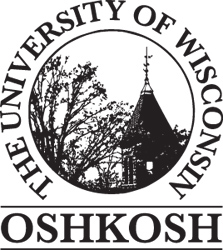On the Publication of POP CULTURE NEW & OLD (English)
「現行の初級日本語コースは学習者の知的レベルに見合っているだろうか?」「学習者の言語力の低さを理由に、文化教育がないがしろにされていないだろうか?」「初級レベルから、学問的探求の入り口となるような内容重視の授業を可能にする方法があるのではないだろうか?」「学習者の言語力向上と文化理解を同時に促進するための、より効果的なテクノロジーの活用法があるのではないだろうか?」、このような問題意識を出発点として作成された教科書が、本書『ポップカルチャー NEW & OLD: ポップカルチャーで学ぶ初中級日本語』です。上記の批判的考察を繰り返しながら、大学の初中級レベルの日本語コースで試用、修正を重ね、今回の刊行に至りました。これらの問題意識を共有する先生方に「この教科書は答えの一つになり得る!」と思っていただけたら、それに勝る喜びはありません。
本書の刊行にあたり、まず、教科書作成協力者の江森祥子さんとくろしお出版編集者の市川麻里子さんに心からお礼を申し上げたいと思います。お二人の多角的な視点からの意見と助言、そして全面的な協力なくして、本書を今の形に作り上げることは出来ませんでした。また、本プロジェクトの採用を決定してくださったくろしお出版の岡野秀夫社長にも改めてお礼申し上げます。
本書の漫画教材と全課のイラストは、マンガアーティストの山縣志穂さんにご担当いただきました。山縣さんの作品のおかげで、学習者にユニークな学びの場を提供出来るようになったと確信しています。娯茶平七代目連長岡秀昭さんと連員の山城嘉明さんには、徳島市阿波おどり本番直前のお忙しい時期に取材を受け入れていただき貴重なお話を聞かせていただきました。京都国際マンガミュージアムでは、伊藤遊さん、中村浩子さん、渡邉朝子さんに大変お世話になりました。また、本書の作成にあたっては、上記以外にも、北海道から九州まで様々な場所に赴き、取材や実地調査を重ねました。その際にご協力いただいた全ての方々に、改めて感謝の意を述べたいと思います。なお、本書にある全ての不備は著者の責に帰するものです。
近年の日本語学習者の大多数が現代日本のポップカルチャーに強い関心を持っているということは周知の事実だと言えるでしょう。本書が、そのような学習者に魅力的な日本語学習、日本文化の学習の機会を提供する一助となり、日本語教育・日本研究の分野の更なる発展に貢献出来るようになることを願ってやみません。
2017年3月 花井善朗
本書の一部は以下の助成を受けたものです。
- Japan Foundation Los Angeles , Japanese-Language Education Project Grant
- University of Wisconsin Oshkosh , Faculty Development Grant
Do the current elementary-level Japanese courses meet the intellectual needs of learners? Are we ignoring the cultural side of education for learners at a lower language level? Is there some way for us to create a class with content that enables even elementary learners to open lines of academic inquiry? Is there a better way for us to apply more effective technology to improve learners’ language skills while simultaneously advancing their understanding of the culture? This book, POP CULTURE NEW & OLD: Elementary and Intermediate Japanese through Pop Culture, has been created with these issues in mind. This publication is the result of repeated critical consideration of the points mentioned above, carried out during experimentation and trial-and-error testing in college-level elementary and intermediate Japanese courses. Nothing would make me happier than for other like-minded instructors to see this textbook as a potential solution to these problems.
Upon the publication of this book, I would first like to extend my heartfelt gratitude towards Shoko Emori, for collaborating with me in the creation of this textbook, and Mariko Ichikawa of Kurosio Publishers, for her thorough and detailed editing. Without their encouragement, diverse opinions and overall cooperation, it would not have been possible to create this book in its current form. I would also like to take this opportunity to once again thank the President of Kurosio Publishers, Hideo Okano, for his decision to support this textbook project.
Manga artist Shiho Yamagata provided the illustrated materials found within each of the book’s chapters. I truly believe that Ms. Yamagata’s work makes it possible for the book to offer students a unique learning experience. I am also very grateful that I was able to interview and collect valuable information from Hideaki Oka, the Seventh President of Gojyahei, and Yoshiaki Yamashiro, a participating member, during their very busy schedules before the Tokushima City Awa-Odori Festival. Additionally, I would like to offer my sincere thanks to Yu Ito, Hiroko Nakamura and Tomoko Watanabe of the Kyoto International Manga Museum, as well as to everyone who offered their support and cooperation for the numerous interviews, field studies and other research gathering efforts that were conducted in various locations from Hokkaido all the way to Kyushu. Nevertheless, any and all of the imperfections in this book may be attributed purely to the author.
It is commonly believed that, in recent years, the great majority of Japanese language learners have developed a strong interest in modern Japanese popular culture. It is my earnest hope that this book will be able to successfully combine that passion with Japanese language learning and cultural understanding, thereby leading to greater contributions to the fields of Japanese language education and Japanese Studies.
Yoshiro Hanai
March 2017
This textbook project was supported in part by the following grants:
- Japan Foundation Los Angeles , Japanese-Language Education Project Grant
- University of Wisconsin Oshkosh , Faculty Development Grant



